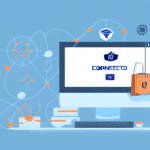Introduction to Universal Delivery Service (UDS) and Easyship
Easyship is a powerful shipping platform that helps merchants simplify the process of shipping products globally. To fully leverage the benefits of Easyship, it's crucial to integrate it with a reliable, efficient, and high-performance Universal Delivery Service (UDS). This article explains what UDS is, why it's beneficial to use it with Easyship, and provides a comprehensive guide for connecting, optimizing, and managing your UDS settings.
Understanding Universal Delivery Service (UDS) and Its Integration with Easyship
What is UDS?
Universal Delivery Service (UDS) refers to a technology and logistics infrastructure that connects merchants with multiple shipping carriers and service providers. It streamlines and automates the shipping process, enabling efficient global product distribution.
Why Use UDS with Easyship?
Integrating UDS with Easyship grants access to a wide range of shipping options, including express, standard, and economy services. It offers flexible and customizable delivery solutions, reduces shipping costs, increases shipping speed, improves tracking, and enhances customer satisfaction through real-time analytics and optimizations.
Benefits of Using UDS for Easyship Shipping
- Access to Multiple Carriers: Connect with a variety of shipping options and carriers such as FedEx, DHL, UPS, USPS, and more.
- Real-Time Shipping Rates and Delivery Estimates: Get accurate shipping rates and delivery times based on product dimensions, weight, and destination.
- Automated Customs Clearance: Simplify cross-border shipments with automated customs processes, tax calculations, and duty management.
- Advanced Tracking Features: Monitor the shipping status of your products in real-time and keep your customers informed.
- Customizable Delivery Options: Offer various delivery choices such as scheduled delivery, pickup points, and customer self-service options.
- Integrated Analytics and Optimization Tools: Measure and improve shipping performance metrics like delivery time, cost, and customer satisfaction.
Connecting Your Easyship Account with UDS
Connecting your Easyship account with a UDS provider involves a series of steps to ensure seamless integration and optimal performance. Here's how to do it:
- Select a UDS Provider: Choose a reputable UDS provider such as ShipStation, Shippo, or Magento.
- Configure Your UDS Account: Ensure your UDS account is set up correctly and integrated with your chosen shipping carriers.
- Access Easyship Settings: Log in to your Easyship account and navigate to the Settings tab.
- Add Fulfillment: Click on the Fulfillment tab and select "Add Fulfillment."
- Select Your UDS Provider: Choose your UDS provider from the list and follow the on-screen instructions to link your accounts.
- Verify UDS Settings: Ensure that shipping rates, delivery options, and other preferences are correctly configured.
- Test the Integration: Place a sample order to verify that shipping and delivery options function as expected.
- Monitor and Optimize: Continuously monitor your UDS settings to optimize shipping performance and costs.
Optimizing and Managing UDS for Easyship
Optimizing Your UDS Configuration
- Select Appropriate Carriers: Choose shipping carriers based on product type, destination, and delivery speed requirements.
- Set Competitive Shipping Rates: Configure shipping rates and rules to offer transparent and competitive pricing.
- Enable Tracking Notifications: Keep customers informed about their shipping status and delivery times.
- Enhance Shipping Efficiency: Utilize batch processing, automated label printing, and streamlined customs procedures to maximize efficiency.
- Analyze Shipping Data: Regularly review shipping performance data to identify areas for improvement.
Managing Your UDS Settings
- Evaluate Shipping Performance: Assess current shipping metrics to identify bottlenecks or issues.
- Review Integration Settings: Ensure that UDS configurations align with your business goals and customer needs.
- Monitor Shipping Analytics: Use analytics tools to detect anomalies in delivery times, costs, or customer satisfaction.
- Communicate with Providers: Collaborate with your UDS provider and shipping carriers to resolve any issues.
- Compare UDS Providers: Regularly assess your UDS provider's performance against others to ensure optimal service.
- Update UDS Configurations: Make necessary adjustments to your UDS settings based on data insights and customer feedback.
Troubleshooting and Common Issues
Technical Issues and Support
If you encounter technical problems during UDS integration, reach out to your UDS provider's technical support for assistance.
Shipping Rate Discrepancies
Verify that your UDS settings are accurately configured to ensure consistency in shipping rates and delivery estimates.
Order Delays and Customer Communication
In cases of shipping delays, maintain clear and proactive communication with your customers to manage expectations and reduce frustration.
Handling Disputes and Claims
Collect and maintain documentation for any disputes or claims with your UDS provider or shipping carriers to support resolution efforts.
Best Practices and Future Trends in UDS Technology
Best Practices for International Shipping
- Research and comply with each country's customs laws and regulations to avoid delays.
- Ensure product labeling and packaging meet international shipping standards.
- Offer delivery options that align with customer preferences, such as express or standard shipping.
- Partner with global UDS providers experienced in international logistics.
- Regularly monitor international shipping performance and costs to identify optimization opportunities.
Tracking and Analyzing Shipping Performance
- Utilize Easyship's analytics and reporting tools to visualize shipping data.
- Integrate shipping data with other business platforms like accounting and CRM systems for comprehensive insights.
- Monitor key performance indicators (KPIs) such as delivery time, cost, and customer satisfaction.
- Leverage data-driven insights to inform business decisions related to pricing, marketing, and product development.
Integrating Multiple Shipping Platforms
- Select UDS providers that support integration with various shipping platforms like Shopify, WooCommerce, and Magento.
- Ensure proper configuration and testing of integrations before deployment.
- Regularly monitor integrations to maintain functionality and performance.
Comparing UDS Providers for Easyship
| UDS Provider | Pros | Cons |
|---|---|---|
| ShipStation | Intuitive interface, extensive integration options, robust analytics and reporting. | Higher pricing tiers, limited customization capabilities. |
| OrderCup | Competitive fees, customizable shipping rules, responsive customer support. | Fewer integration options, less user-friendly interface. |
| Shippo | Affordable pricing, wide carrier network, easy Easyship integration. | Limited customization, basic reporting features. |
Future Trends and Innovations in UDS Technology
- Artificial Intelligence and Machine Learning: AI algorithms will optimize shipping rates, delivery times, and carrier selections based on comprehensive data analysis.
- Blockchain Technology: Enhances transparency, security, and trust in shipping and logistics operations.
- Drone and Autonomous Deliveries: Reduces delivery times and costs while improving accessibility and efficiency.
- Collaborative Logistics Platforms: Facilitates resource sharing, route optimization, and carrier collaboration among businesses.
Staying informed about these trends will help you continue to optimize your shipping performance and leverage the latest UDS technologies to maintain a competitive edge and exceed customer expectations.




















